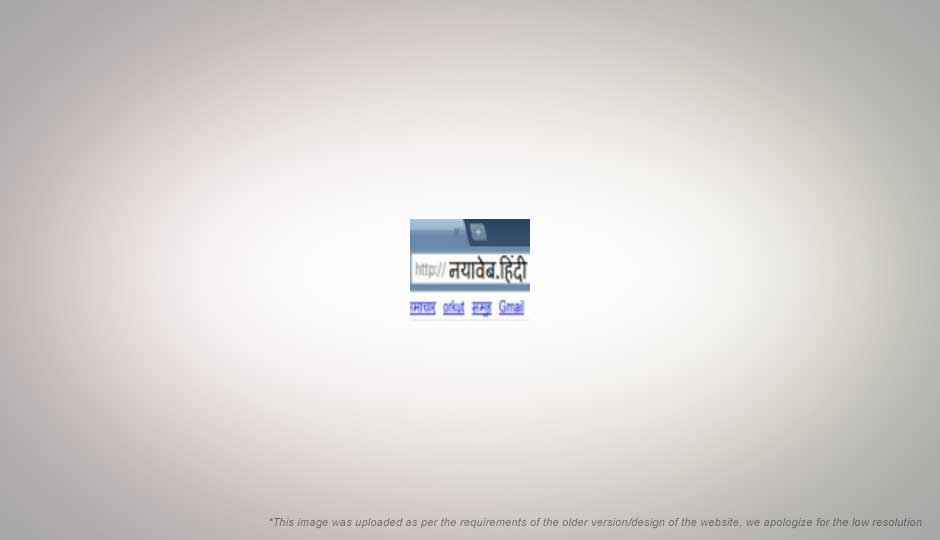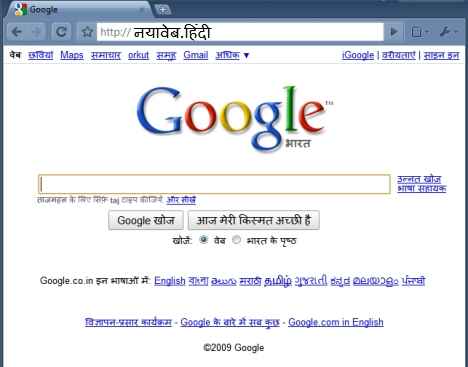Home » News » General » Internet will soon get Hindi and other language URLs, specialised domain suffixes
Internet will soon get Hindi and other language URLs, specialised domain suffixes
By
Mihir Patkar |
Updated on 27-Oct-2009


A bombshell was dropped at the conference of the Internet Corporation for Assigned Names and Numbers (ICANN) in Seoul. The international body’s chairman, Peter Dengate Thrush, announced that the standard Latin-language Web addresses used currently will soon be replaced by multi-lingual scripts.
“This is the biggest change technically to the Internet since it was invented 40 years ago,” said Dengate Thrush. ICANN, the non-profit group that oversees domain names, stated this would allow Chinese, Hindi, Russian, Arabic and other scripts to be used to make the entire Web address, instead of the current practice of allowing for only the part before the ‘.com’ suffix to be written in a different script.
“Of the 1.6 billion Internet users today worldwide, more than half use languages that have scripts that are not Latin-based,” said ICANN president Rod Beckstrom. “So this change is necessary not only for half the world’s Internet users today, but more than half of future users as the Internet continues to spread.”
“A country like India, with the high diversity of languages and scripts being used across the growing number of Internet users, has a great challenge to solve – to ensure that the language communities are represented in the right way and without confusability problems. At the same time, India will have a great benefit with the introduction of (these new domains) to promote local ecommerce, information sharing, local advertisements, research and basically online communication; that is, without the need to replicate Web addresses based on Latin characters,” Tina Dam (Sr. Director, Internationalised Domain Names, ICANN) told ThinkDigit.
The body is set to vote on the issue on Friday, and by the looks of it, the approval is a foregone conclusion. If approved, the proposed launch date for these Internationalised Domain Names (IDNs) wil be November 16, 2009. According to ICANN, the whole setup could be up and running by the middle of next year.
HOW IT WORKS
The ability of the Internet to understand these new scripts depends on a new technology that ICANN has created and tested, which lets current Domain Name Systems (DNS) to understand the different scripts.
Domain Name Systems act as a translator for the Web. When a user types a certain alphanumeric Web address, such as www.thinkdigit.com, the DNS then translates this into a numeric IP address for the server to understand.
The new technology alters this DNS to enable it to translate non-Latin scripts.
“You have to appreciate what a fantastically complicated technical feature this is,” said Dengate Thrush. “What we have created is a different translation system.”
TOP LEVEL DOMAINS TO COME SOON
At the six-day conference in Seoul, ICANN will also be discussing the introduction of Top Level Domains (TLD), as previously reported on this site. These are specialised domain suffixes that will be given to only some companies, organisations and individuals who have a legitimate claim on the domain name, thus ending the practice of cyber-squatting.
Beckstrom said that Internet addresses would no longer use limited TLDs such as .com or .org, and instead use more flexible “Internationalised Domain Names” such as .post or .bank.
Under the new system, all Web addresses ending .bank would only be available to “authorised” banks.
The AFP quoted him as saying that the world would be able to “save roughly 60 to 100 billion human keystrokes a day” by getting rid of keystrokes that are currently needed to find Web addresses ending, for example, in individual country codes.
ADOPTION IN INDIA
However, it could take some time before the new technologies come to India, due to technical issues and the involvement of a government-supported entity.
The IDN country-code Top Level Domains would have a Fast Track Process for non-Latin scripts, said Tina Dam.
“So for languages like Hindi, Tamil and Malayalam, this would require an entity, with support from the Indian government to request and introduce ‘.india’ in either or all of these languages,” Dam told ThinkDigit.
“ICANN will make the process available. Who is using it is a local decision,” she said when queried about the TLDs.
Others, however, are a bit more optimistic. Naresh Ajwani, president-government affairs, Sify Technologies, told Business Standard that the Department of Information Technology in India already has fonts for 22 local languages.
“This, and the fact that GLTDs may be opened up to more domains, will witness a sea of change in the way the internet is structured,” says Ajwani.
